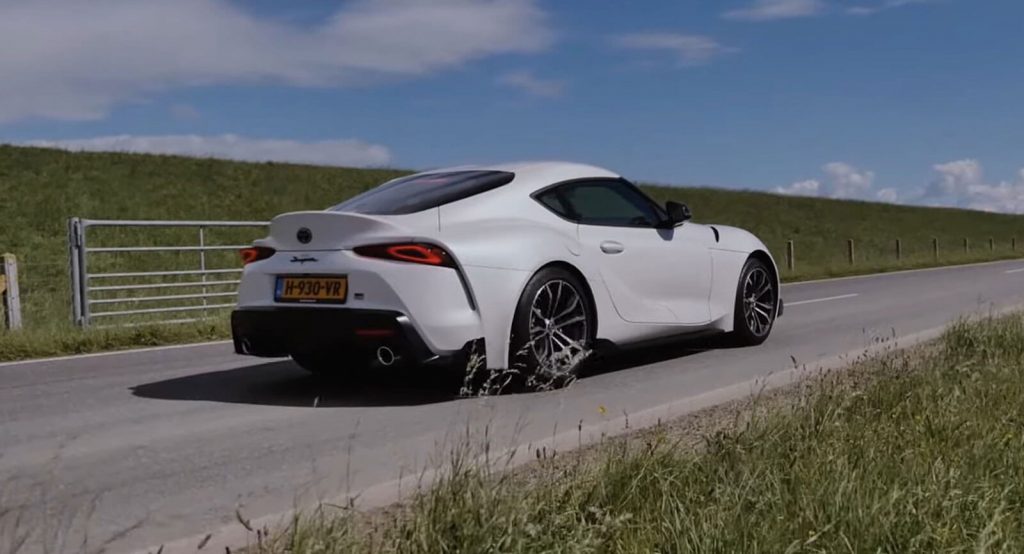Starting this year, the Toyota GR Supra has been available with BMW’s 2.0-liter turbocharged four-cylinder engine on both sides of the Atlantic Ocean.
The base unit that’s shared with the BMW Z4 sDrive30i produces 255 HP (258 PS / 190 kW) and 295 pound-feet (400 Nm) of torque and is mated to a standard eight-speed automatic transmission.
Power levels are identical in both markets, and so is the performance, with the Japanese automaker claiming an official 5.2 seconds for the 0-62 mph (0-100 km/h) sprint, 5.0 seconds from 0 to 60 mph (0-96 km/h) and a top speed electronically limited to 155 mph (250 km/h).
See Also: 2020 Toyota GR Supra And 2018 Porsche 718 Cayman GTS Battle It Out, Which One Would You Get?
For the entry-level version of the sports car, customers will have to pay at least $42,990, excluding destination, in the United States, and €52,433.95 (equal to $61,970 at the current exchange rates) in Germany. The 3.0-liter six-pot, with 382 HP (387 PS / 285 kW) and 368 lb-ft (499 Nm), which drops the 0-60 mph to 3.9 seconds and has an identical limited top speed, carries an $8,000 premium in the U.S. market at $50,990, whereas the better equipped Premium edition has an MSRP of $54,490.
We know how quick the GR Supra 2.0 is on paper, but what about in the real world? The sports car has had its 0-62 and 0-124 mph (0-100 / 0-200 km/h) sprint tested, using a third-party device, as well as the 1/8-, 1/4-, 1/2- and 1-mile times, with the traction control off and the Sport driving mode engaged. So, how did it do? The answer lies on video from Autoblog.nl below.



